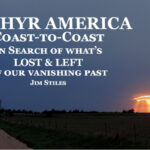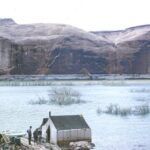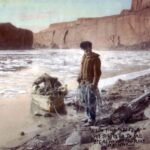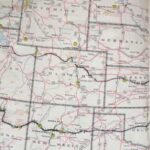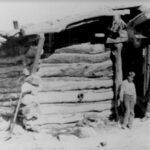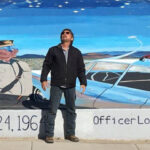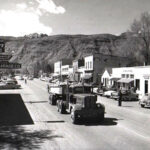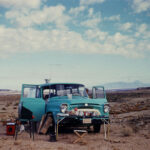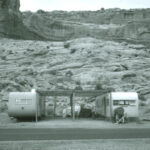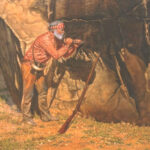
Sometime in late September or early October of 1844, Utes attacked Robidoux’s Fort Uintah trading post… One contemporary story stated that at the time of the attack, the fort had very few of its usual inhabitants present, many having already departed because of the increasing tensions with the neighboring Uinta-ats. Denis Julien seems to have been one of these.
Far to the south, in the Devils Garden section of present-day Arches National Park, is the last known, chronologically, Julien inscription. It has been scratched into the dark, desert-varnished side of a tall sandstone fin and reads, “Denis Julien 9 6 me 1844.” The “6 me ” is the French equivalent of 6 th in English, sixth in French being sixième. The preceding numeral “9” is representative of the ninth month, September…

